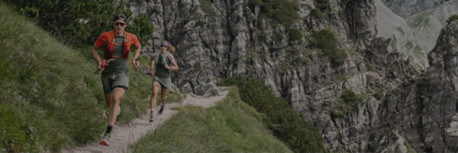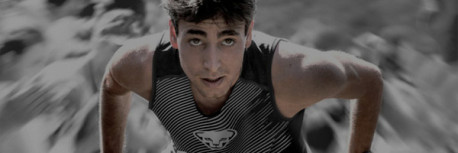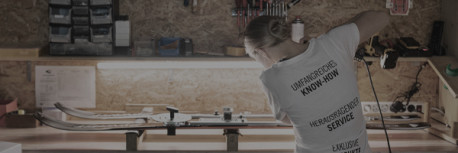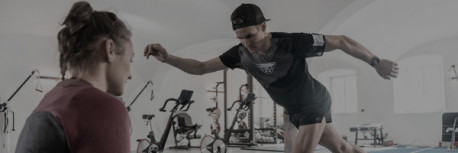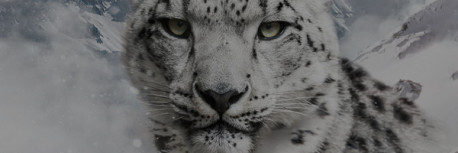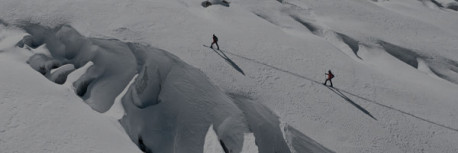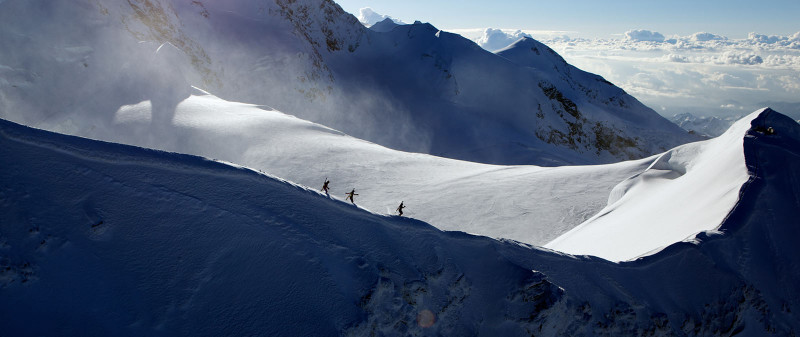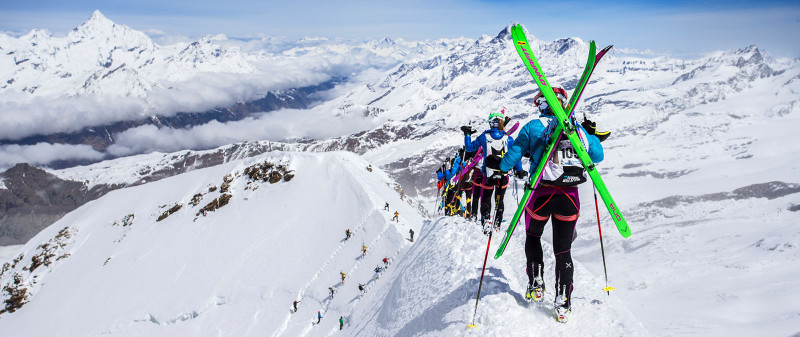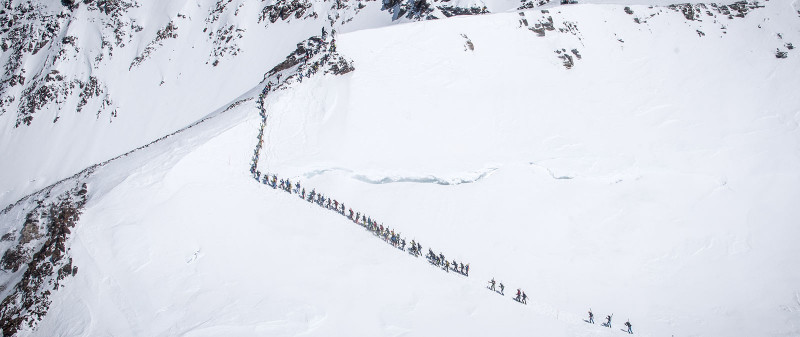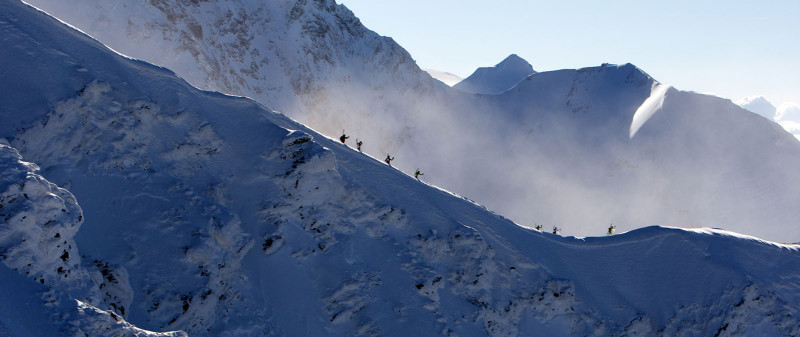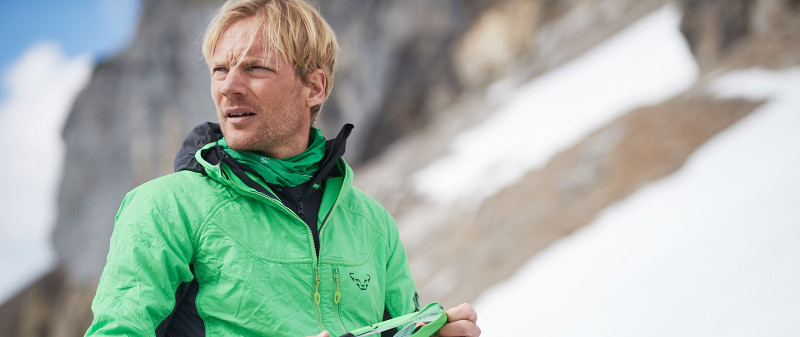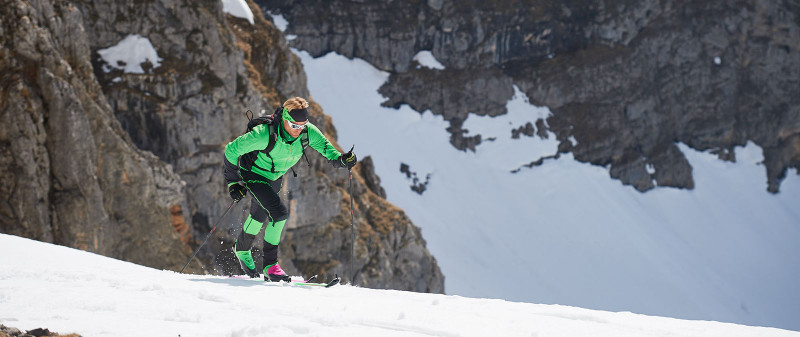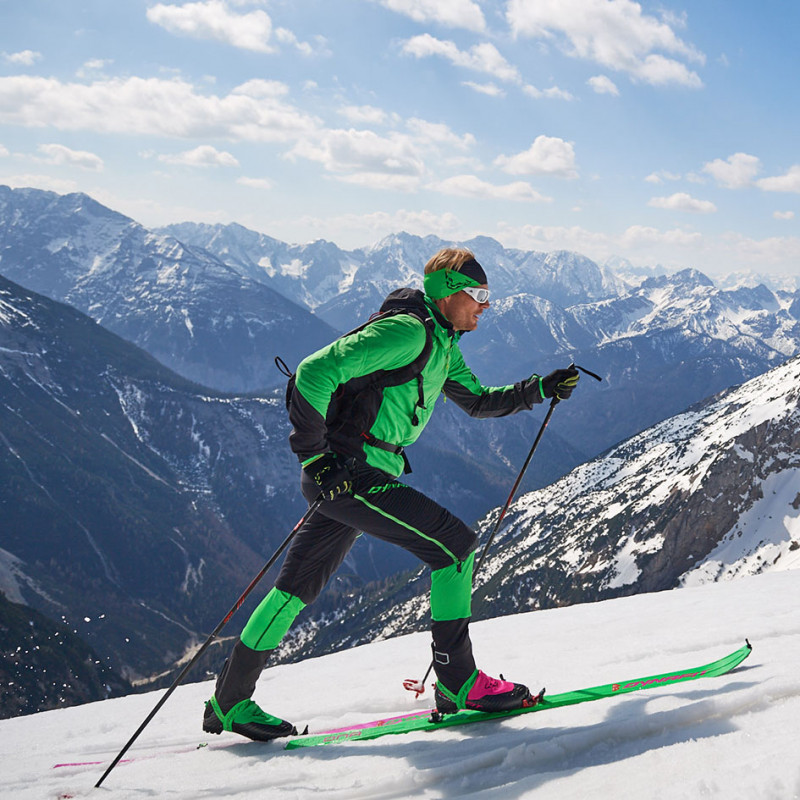The Mezzalama Trophy - the Holy Grail of ski mountaineering
The Mezzalama Trophy is the world’s highest alpine ski mountaineering race, and one of the toughest races in the sport. Making it to the finish line of the course through the Italian Monte Rosa massif requires focused training and a significant tolerance for suffering on race day. Benedikt Böhm has stepped up to this challenge on several occasions and reveals just what it takes to be successful.
The ultimate. A legend. Insane. Pushing the limits. When ski mountaineers talk about the Mezzalama Trophy, the buzzwords and superlatives tumble together like weekend skiers on a sunny day in an unruly line for the chairlift. The Patroille des Glaciers is one of the best-known competitions in ski mountaineering. Even members of the general public have heard of it, especially since Pippa Middleton took part. In contrast, the Mezzalama Trophy is simply known as one of the toughest, most challenging races in the sport. Unlike the PDG, competitors need to be more than just in peak condition -- they need a considerable amount of alpine experience and the ability to think and act for themselves. I’m an experienced speed-mountaineer and, even for me, the Mezzalama Trophy is anything but a walk in the park. It represents a significant challenge and requires both physical fitness and mental discipline. Twice -- in 2011 and 2017 -- I was able to successfully complete the race. In doing so, I learned one thing: The Mezzalama is only for serious, hardcore athletes, and if you’re going to take part it doesn’t hurt to be a little crazy. At the end of the day, it’s worthwhile, because there’s no other race that brings together all the things that ski mountaineers dream of -- and that also teach them to maintain respect for the mountains -- in a such a massively impressive way. The level is incredibly high. But the fun factor is incredibly high, too.
The PDG perfectly masters the balancing act between adventure and safety. In the Mezzalama, adventure definitely wins out.
Even simple statistics make clear that the Mezzalama Trophy is no Sunday walk in the park. The event takes place every two years in the Monte Rosa massif, in the shadow of the Breithorn, the “Klein Matterhorn” and the famous twin summits Castor and Pollux. The classic route runs from Breuil-Cervinia to Gressoney-La-Trinité. In the course of 45 kilometers (28 miles), there are 2,862 vertical meters of climbing (9,390 feet) and 3,145 meters (10,318 feet) of descent. Several points on the course reach above 4,000 meters in altitude, including the ridge of the Castor summit, which is quite exposed and in places only 30 cm wide (12 inches). The passes that have to be negotiated are pretty serious and demand maximum concentration from the 900 participants who race in teams of three. In icy conditions, the Il Naso di Lyskamm can quickly turn into a critical passage with a high risk of falling. Technical sections over ice-covered steep steps, and knife-edge ridges are far from all that the Mezzalama has to offer. The course is rounded off by an apparently endless descent through countless moguls, ending up with an occasionally extremely slushy section for a grand finale.
Individual responsibility is important at the Mezzalama
Given these challenges, it’s no wonder that the event organizers led by Adriano Favre use strict criteria in the selection of the competitors. Anything else would make a demanding race of this kind simply impossible. The Mezzalama is not just another event; it demands significant individual responsibility on the part of the athletes. The selection process and strict time limits guarantee that only ski mountaineers with the necessary skills and technical ability to handle the course will be at the starting line. One thing must be made clear: The Mezzalama is -- in parts -- a pretty serious affair. The danger of a person falling and taking the whole team down with them is clearly always present. The Mezzalama isn’t an adventure game, it’s a real adventure. The caliber of the competitors becomes clear when you glance at the finishing times: normal ski tourers generally take three days to cover the distance. The top teams in the Mezzalama Trophy finish in less than four and a half hours. If that sounds like hard work, it is! But at the same time, there’s no better feeling than pushing yourself to your limits through such a grandiose landscape until you stagger exhausted but euphoric over the finish line. It’s a moment of relief and satisfaction that is difficult to put into words. With focused, regular training, every ambitious ski mountaineer is capable of completing the Mezzalama.
The special charm of the Mezzalama comes from the technical challenge combined with the spectacular scenery
One unpredictable factor that can make the Mezzalama even more challenging is -- as is often the case -- the weather. I can still remember my first Mezzalama in 2011 – an experience that stays with me still: It was indescribably cold. We stood, shivering, waiting in line at one of the icy ridges. Above our heads, helicopters circled, dropping off warming shelters in which exhausted and hypothermic racers could take refuge from the cold. That was the moment when it became clear to me that the Mezzalama Trophy is a really exciting race, which demands that you be in perfect physical shape -- but that this by itself is not enough to guarantee that you will get to the finish line. In addition, you need to have the right strategy, a strong team and -- of course -- the right equipment. Here are eight points that in my experience are crucial for success:
1. Staying warm is priority #1
The Mezzalama course crosses above 4,000 meters several times and, consequently, the temperatures will be really cold even in good conditions. As soon as you notice that you are getting really cold, you should stop and add a layer. The basic rule is simple: You are climbing higher, and therefore the cold is not going to get better; in fact, it’s only going to get worse. At some point you are going to have to stop and put on something warm so it’s better to do it as soon as you feel cold. This means you don’t tap into your reserves, and it saves your energy stores. We were able to overtake other much stronger competitors close to the end of the race because they were freezing cold and had used up much more energy. In short, maintaining your body temperature results in maintaining your performance. It’s especially important not to arrive at the technical transitions chilled to the bone. If your fingers are frozen, you’re going to have a hard time attaching crampons or putting on skins.
My product recommendation: I really like the DYNAFIT Borax PrimaLoft Mitts. These mitts are nicely warm, but if you want to get a little cooler, or you need more manual dexterity, it’s easy to slide your fingers through an opening in the palm. This also means that it isn’t necessary to take off the gloves, which rules out the risk of losing them.
2. Don’t cut corners when it comes to saving weight
Obviously, it’s essential to carry as little weight as possible in a race like the Mezzalama. The lighter you are, the less energy you need and the faster you go. But don’t save weight in the wrong ways. You should always have a light but warm insulated jacket as an additional layer in your pack. It’s not uncommon on the Mezzalama for small logjams to form before moving along critical passages. And you simply have to deal with the cold until you can get going. At points like this, you should pull on an extra layer to prevent your core temperature from dropping. Or you may have to take a break to wait for a teammate -- not all competitors can maintain the same pace. Starting the race without additional warm clothing in order to save a few grams is definitively the wrong decision.
My product recommendation: the Radical Down Hooded Jacket. It weighs a mere 422 grams but is very warm. The shell material shrugs off snow, and stretch panels mean that you have unrestricted freedom of movement. It’s simply perfect for the really cold sections of a ski tour.
3. Go slow to go fast
It’s really important for a long race like the Mezzalama to find the right strategy and divide up the course mentally into sections. I’m always amazed that some competitors take off from the starting line as if they were in a 100-meter sprint and not a race which lasts several hours. In my experience, you definitely shouldn’t start out too quickly. It’s better to set a pace that you can maintain over the entire course. This almost always pays dividends at the end of the race -- you can improve your overall race position and pick off the competitors who started out too quickly and are now fading. If you can keep a constant pace, you can stay in your “zone” and at some point the course will slide by almost on its own.
4. Don’t forget food and drink
Your body can only reach peak performance if it has adequate energy reserves. Even if you don’t feel hungry or thirsty, it’s extremely important to keep refueling to maintain energy levels. Ideally, you should drink slowly in small amounts and eat either gels or energy bars every 45 minutes. If you get to a point where you are really hungry, or your blood sugar level is too low, it’s already too late. So you should eat and drink regularly. The best thing is to frequently slurp energy gels -- you can do this quickly, and they are easily digested. Keep the gels next to your skin so they stay warm. Trying to eat an energy bar when it’s really cold and your face is frozen can be a real challenge. Insulated water bottles should be attached to your pack in a way that allows easy access. if you use a hydration bladder, it will need to be carried next to your skin to prevent it from freezing --- the Mezzalama is a really cold race.
My product recommendation: A Race Thermo Bottle stowed in the insulated Alpine Bottle Holder means that you always have water or an electrolyte sports drinks in easy reach.
5. Acclimatization makes altitude more bearable
The Mezzalama is a high alpine race, and it is strongly recommended that you acclimatize appropriately before the race starts. The Breithorn offers the perfect opportunity for a tour where you can sleep at altitude. If you have the time, making the trip to the summit of Castor certainly can’t hurt. It gives you the chance to become familiar with the technical critical ascent sections, which will give you an advantage later in the race. And, not coincidentally, you have an amazing view from the summit of the Valais Alps and the surrounding mountains such as Pollux, Liskamm and Felikjoch.
6. Practice your technical transitions and stow your gear systematically
The Mezzalama has a little bit of everything: running with skis on your back, ascending and descending on skis including multiple points where you put on or take off skins, crossing exposed ridges while using crampons and fixed lines. You have to practice the technical transitions: Every move must be perfectly organized so as not to waste valuable time. Every piece of gear has to have a dedicated place in your backpack, and you have to pack with a system in mind. It is incredibly irritating if your crampons are bouncing around somewhere, or if your skis are not secured properly on your pack when you start running. This is where precision, concentration and a systematic approach are needed. Each team member will have his or her own system, but it’s essential to practice stowing and deploying gear until it is second nature. It’s the only way for a team to move efficiently and without unnecessary stress.
My product recommendation: The Speed 20 Backpack is the perfect companion for ambitious tours or longer races. It has a capacity of 20 liters, enough for all the gear you need with you on a ski tour yet weighs in at a mere 360 grams. The Speed 20 has plenty of intelligent features. A separate compartment for safety equipment, a removable ski attachment system, attachment points for a helmet and ice ax, and a separate crampon pocket keep everything perfectly in place while allowing easy access without needing to set down the pack. The Speed 20 Pack is a genuine masterpiece for ski touring and skimo racing.
7. It takes a team to win
The Mezzalama is a team competition. You struggle and suffer together as a team of three -- and you celebrate at the finish line as a team of three, too. In the case of some teams, you have the feeling that they’re not racing together, but as individuals, each trying to outdo the other. Sure, you always push each other in a team -- that’s part of what makes a team competition so special. But each team member has to be clear on the fact that the team is only as strong as its weakest link. It comes down to the team to set a pace that the seemingly slowest member can maintain, and it comes down to everyone to help each other out. Each member plays his or her part in a successful outcome. One person may be physically less strong, but he or she may just find the right motivational words when they are needed most. In 2017 I was lucky enough to take part in the Mezzalama with my longtime friends Javi and Arnaud. We were all on the same wavelength and complemented one another perfectly. If you get to the top of an ascent or to the bottom of a descent faster than the others in your team, you help your teammates with a technical transition, by assisting them with ski skins or crampons, or by getting an energy gel or something to drink ready for them. Being part of a team like that makes what could otherwise be a hard grind more fun and contributes to each athlete being faster -- and the team as a whole. And that’s what it’s all about!
8. Descending while roped together is a skill you need to learn
Descending while roped together in extremely difficult terrain is the supreme discipline in a team competition such as the Mezzalama. You need maximum concentration and coordination to successfully manage this kind of three-way relationship. You definitely need to practice in advance how you descend together, and you need to decide who will lead. Ideally, you should agree on hand signals, so each team member knows where the team is going and when it will be stopping. If the skier in front wants to go right and the skier at the back wants to go left while skiing at 60-70 kph (35-40 mph), this is not going to end well. Which is something we discovered in 2017. 80 kilos (50 pounds) headed in one direction, 80 kilos in another, and it tore us in every possible direction in the air. When something like that happens, it can take some time before you can untangle yourself from the rope….
Benedikt Böhm participated in the Mezzalama Trpohy in 2011 and 2017. In 2017, together with Arnaud Anguera Bigas and Javier Martin de Villa, he finished 26th out of a total of 300 teams. Their team of three took 6 hours, 23 Minutes to complete the course. The winning team in 2017 led by DYNAFIT athlete Damiano Lenzi completed the Mezzalama in an unbelievable 04 hours, 18 minutes and set a new course record.
The next Mezzalama Trophy takes place on April 27, 2019. Once again, DYNAFIT is the main sponsor of the race. In addition to numerous athletes, the six winners of the “Mountopia Mezzalama” (in two teams of three) will also be at the starting line.

